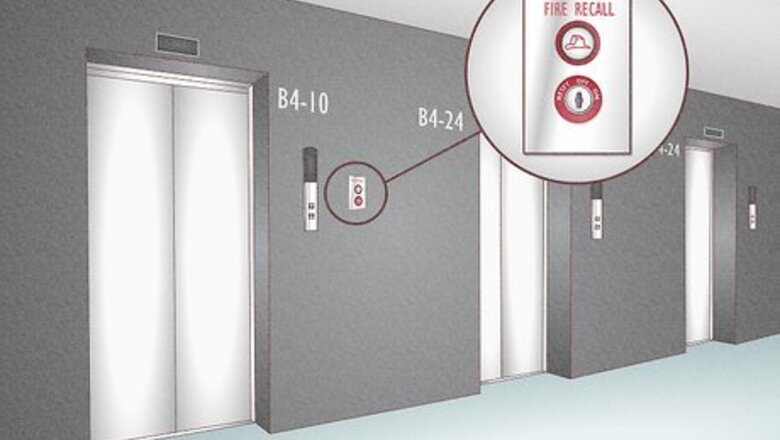
views
X
Research source
Activating Fire Service
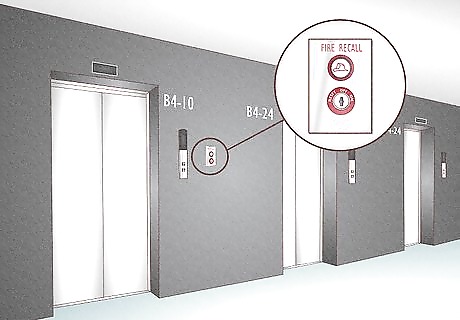
Locate the key switch for the elevators. This is usually located in the hallway that the elevators reside in on the ground floor, inside the fire alarm control room, or in the building's main operation room or security desk.
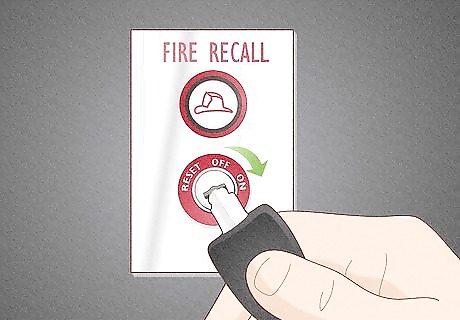
Turn the lift's firefighter's key switch from "OFF" to "ON". This key switch is red and brightly colored. This will send all elevators in the bank or building to the ground or skylobby floor. This will also occur if the fire alarm is triggered in the building. The firefighter's hat will illuminate, the elevator floor indicator may blink, and the elevator will then indicate to passengers to exit when the doors open.
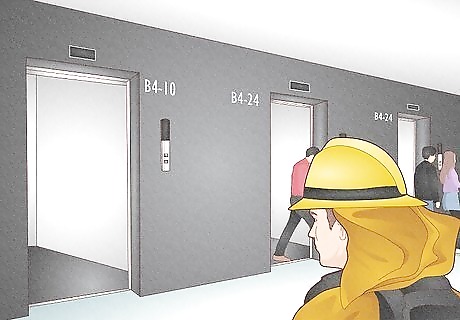
Verify that all elevators in the bank or the building have recalled to the ground or skylobby floor. In the event of an emergency, this will free passengers that may have become trapped because of a power surge or power loss. If there are elevators that have not made it to the ground floor, you may have to initiate a rescue.
Selecting an Elevator
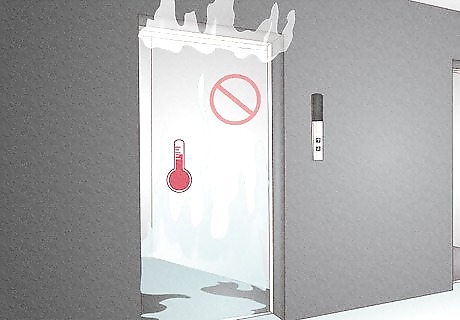
Ensure that there is no smoke, heat, or water inside of the lift shaft. If there is, use a different elevator or take the stairs up to the fire floor. Look up and shine a flashlight to check for signs of fire. You do not want to unnecessarily endanger yourself if there is a fire on a specific floor. Some buildings will have a dedicated firefighter's elevator or elevator bank that services all floors and that can be used in an emergency. This lift can be used in fire service and will be labeled with "Firefighter's Elevator" or "Fireman's Lift". Do not use the lift if an alarm was sent from outside one of the floor landings or machine room. This can be verified by checking if the firefighter's hat blinks instead of illuminates solid.
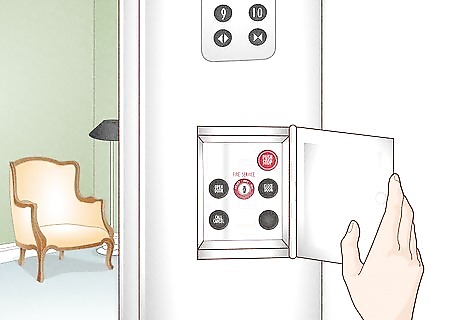
Open the fire service operation cabinet to access the firefighter's buttons. These buttons include call cancel, fire service, door open, door close, and emergency stop. In destination dispatch elevators, this should also include the floor selector. Some elevators do not have a cabinet but still do have fire switches.
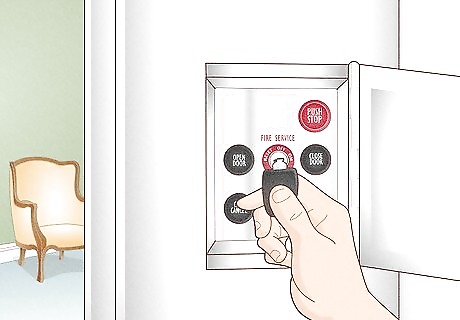
Put the lift into fire service operation. Turn the fire service key from "OFF" to "ON" or "FIRE SERV". This will unlock the floor panel and allow it to be used by firefighting. The firefighters hat, the letters "FS", or the words "Fire Service" should appear on the floor indicator to indicate that the elevator is in firefighter's control.
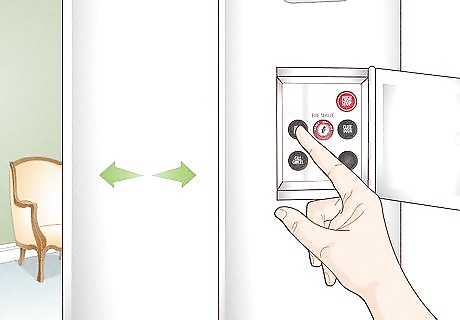
Verify that each button works. If a button does not function as expected, then do not use this specific elevator. Turn the fire service key back to "OFF" and find an appropriate elevator to use. To test the call cancel button, select a floor. Press the call cancel button to deselect all floors. In motion, this will stop the elevator and park it at the nearest available floor. To test the emergency stop button, select a floor. The stop button should deselect the floor immediately. In motion, this will activate the emergency brakes and bring the elevator to a stop. You may have to move the stop switch back into the "RUN" position to use the lift again. To test the door open and door close buttons press and hold them. Upon releasing them the door should stop moving and reverse direction. That means that when the door is closing the door should reopen, and when the door is opening the door should reclose. The door automatically closing is important to prevent smoke from entering the elevator, and the door automatically reopening is important to prevent closure on limbs. Door sensors should be rendered inoperable to prevent smoke from holding the lift door open. Some lifts only have a door open button and do not have a call cancel button. In this case, pressing and holding a specific floor should close the door and select it. Releasing that floor should reopen the door. All floor buttons should illuminate, even if they are normally locked by a security system.
Moving the Elevator

Set the elevator in motion. To do so, press and hold the door close button after selecting a floor, or hold the floor button until the door fully closes. It is recommended to select a floor a few floors above where you started. This will allow you to test for fire and smoke and later change to the stairs before smoke gets too thick. Be aware of any rescues you may need to make with occupants unable to descend stairs, such as the elderly or those in wheelchairs.
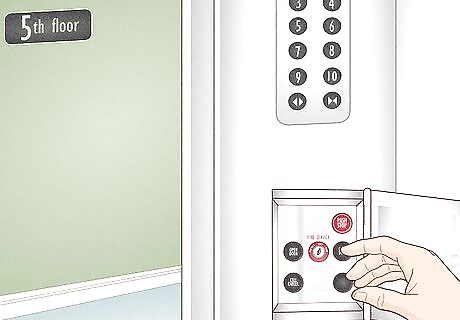
Press and hold the door open button at that floor. Hold it until the door is open a couple of centimeters. If smoke, heat, or water begins to enter the elevator, release the door open button to reclose the door.
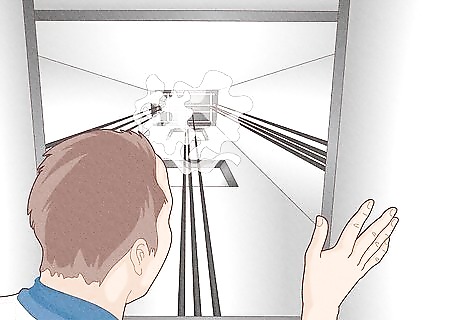
Perform periodic rechecks for smoke, fire, or water in the shaft. If you see any of these in the lift shaft, then put on your firefighting equipment, exit the elevator, and take the stairs up to the floor of the reported fire. When exiting the elevator, turn the key switch from "ON" to "HOLD". This will lock out the lift and prevent people from using it. The key can also be removed in this position.
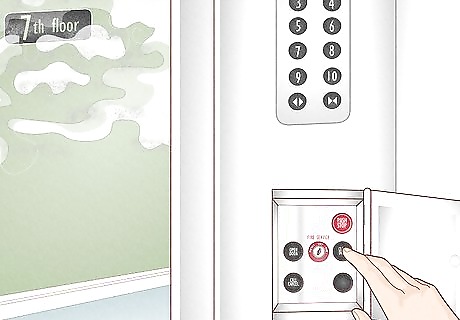
Stop a few floors below the fire floor. Once again, open the doors, check for smoke, and be prepared to reclose the doors if smoke begins to enter. Regardless, put on your firefighting equipment, exit the elevator, and take the stairs up to the floor of the reported fire.
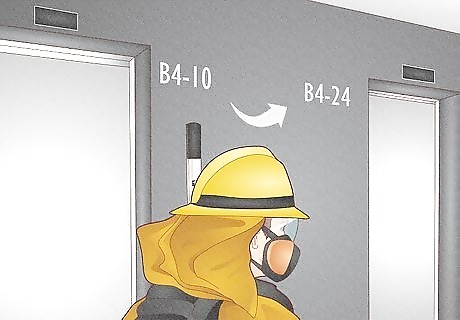
Change elevators if the reported fire is on a higher floor than which is served by the current elevator. To do so, get off at the highest floor, and turn the elevator from the "ON" to the "HOLD" position. Repeat the process of checking for smoke, heat, or water and testing that the buttons function as they are supposed to.
Returning the Lifts to Normal Operation
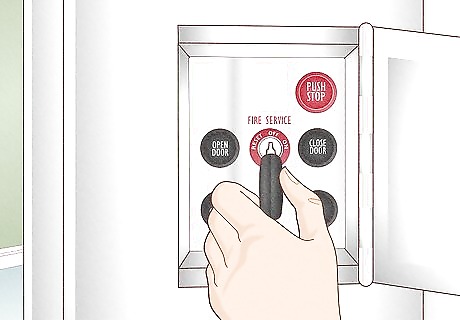
Turn the fire service switch off. Rotate the fire service key from "ON" or "HOLD" to "OFF". This will send the elevator back to the ground floor.
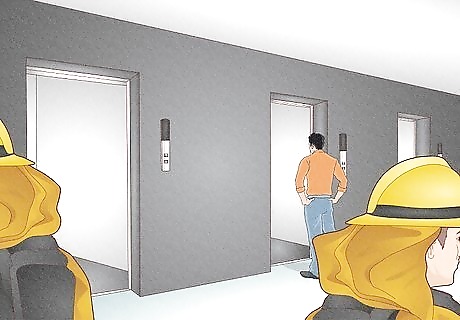
Check that all lifts are back parked at the ground floor. If they aren't, you should, on each elevator's floor panel, turn the fire service key from "ON" or "HOLD" to "OFF".
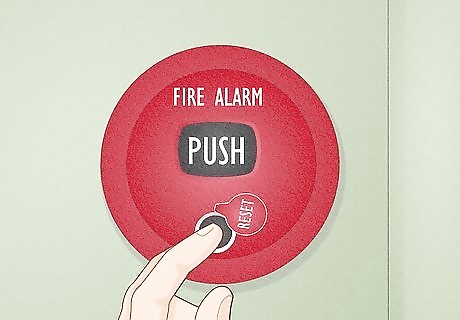
Reset the fire alarm system. To do so, press and hold the "SILENCE" button to silence the alarm. After, go to the area where the fire is reported and reset the activation switches and smoke detectors. You may need to open a window to clear out any smoke that is left. Finally, press the "RESET" button or disconnect and reconnect the power going to the alarm. It may take multiple attempts to reset the alarm, but once it is done, the elevators can be put back into normal operation.
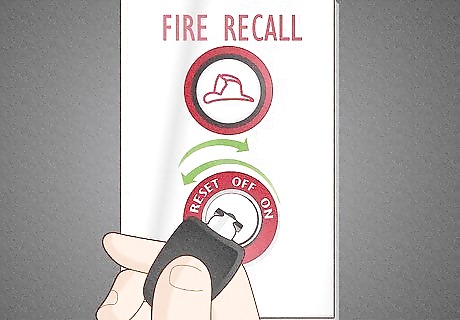
Turn the recall keyswitch to the "BYPASS" or "RESET" position then back to the "OFF" position. This will return all the elevators back into normal operation. The fire recall indicator should turn off and the elevator door should immediately reclose.


















Comments
0 comment